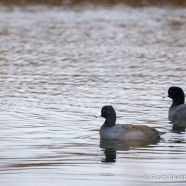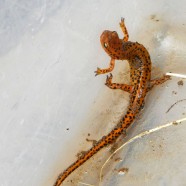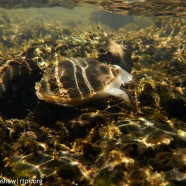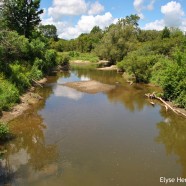American Coots
A species such as these American Coot (Fulica americana) entered January finally having to find some open water as the freezing line has penetrated regions like Chautauqua County, quickly locking up the open water of small ponds and waterways. While Lake Erie can still provide a comfortable spot for many waterfowl this winter others will migrate south to the Atlantic Coast and warmer shoreline quarters. These American Coots are actually in the rail family and more closely related to Sandhill Cranes than their duck friends, and if you have ever seen their legs and feet out of the water then...
Read MoreProject Wild America Youth Ambassadors: Chadakoin River
During 2015, the Roger Tory Peterson Institute launched its Project Wild America Youth Ambassadors program employing six high school students and two college aged students. Throughout the course of the summer months, the PWA students worked alongside RTPI conservation staff to evaluate the Chadakoin River Corridor in the City of Jamestown. This urban river was found to be recovering from its long history of factory pollutants, channelization and overuse. It hosts a variety of flora and fauna including some that are quite rare within the state of New York. Species such as the Spiny Softshell...
Read MoreLong-tailed Salamander (Eurycea longicauda)
Earlier this summer I caught my first glimpse of this handsome salamander, appropriately named the Long-tailed Salamander (Eurycea longicauda). A species of Special Concern in New York State, this uncommon salamander is at the northern fringes of its range and can be found along much of the southern Allegheny Plateau. Long-tails prefer cool woodland seeps and streams, but can occasionally be found along river banks under flat rocks or logs. As the temperatures continue to drop these salamanders will work their way deeper into rock cracks and crevices in order to protect themselves from...
Read MoreFreshwater Mussels
Is it just me, or does it seem this mussel is sticking it’s tongue out at us? Interestingly, mussels don’t have tongues at all! The white, fleshy protrusion you see is actually referred to as the mussel’s foot. While we often don’t witness mussels moving, as they do it very slowly, this is exactly what this one is attempting to do. Mussels will use their muscular foot to inch themselves across a stream or river bed when they feel they are in danger or need to find a more suitable area to settle. Once in place, a freshwater mussel will often bury itself into the...
Read MoreHellbender Surveys Continue
While the summer season is winding down, our survey work certainly isn’t! As stream conditions allow, we will continue surveying for the elusive Eastern Hellbender (Cryptobranchus alleganiensis) in the French Creek watershed and beyond. Working closely with the University of Buffalo and the New York State Department of Environmental Conservation, we have found habitats within the area that may support hellbenders. Test results and hands-on surveys will reveal whether these sites may support a viable population, so we have our fingers crossed and will share more details soon!
Read More








